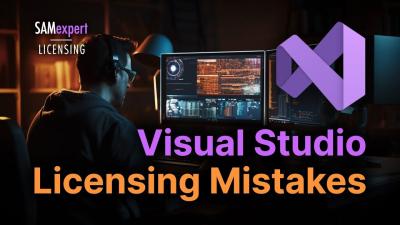Adobe Stock, a leading stock content platform, has been making strategic acquisitions to enhance its offerings and market position. Understanding its current standing and the implications of these acquisitions is essential for grasping how Adobe Stock continues to innovate and maintain competitive advantage. This article explores Adobe Stock‘s role in the creative industry and delves into its latest acquisitions to highlight their significance.
Understanding Adobe Stock and Its Market Position

Adobe Stock is a subsidiary of Adobe Inc., specializing in providing high-quality visual content such as photos, graphics, videos, and templates for creative professionals. Launched in 2015, Adobe Stock quickly positioned itself as a major player in the stock content market by integrating seamlessly with Adobe Creative Cloud applications, making it an attractive option for designers and marketers.
As a part of the creative ecosystem, Adobe Stock benefits from the vast reach of Adobe’s user base, which includes millions of designers, marketers, and businesses worldwide. This integration allows users to access and utilize stock assets directly within their design applications, streamlining the creative process.
In a competitive market that includes other stock content providers such as Shutterstock and Getty Images, Adobe Stock leverages its ties to Adobe’s powerful software tools to establish a unique value proposition. By continuously enhancing its features and expanding its content library, Adobe Stock remains agile and responsive to market demands, ensuring it stays relevant in a constantly evolving digital landscape.
Overview of Recent Acquisitions by Adobe Stock

Recently, Adobe Stock has pursued several acquisitions to bolster its content offerings and technological capabilities. These acquisitions typically focus on enhancing the quality and diversity of visual content while improving user experience. By integrating new technologies and expanding its existing content library, Adobe Stock aims to attract a wider audience and meet the growing demand for high-quality assets.
For instance, acquiring companies that specialize in niche content categories, such as illustrations or 3D assets, allows Adobe Stock to cater to specific market needs, appealing to creative professionals looking for unique resources. Furthermore, investments in cutting-edge technology, such as AI-driven tools for content curation and search optimization, position Adobe Stock as a forward-thinking leader in the digital asset market.
These strategic moves demonstrate Adobe Stock‘s commitment to innovation and customer satisfaction, ultimately strengthening its competitive edge in the stock content industry.
Impact of Acquisitions on Adobe Stock’s Offerings

Adobe Stock has recently ramped up its acquisition strategy, and the impact of these moves is nothing short of transformative. When we think about acquisitions, it’s essential to recognize how they influence a platform’s offerings and capabilities. For Adobe Stock, these acquisitions often translate into a broader array of high-quality media assets and enhanced technology.
One significant outcome of these acquisitions is the increase in diverse content. By integrating new platforms, Adobe Stock can offer users access to a wider variety of stock photos, videos, audio, and 3D assets. This is particularly important for creatives and businesses seeking unique visuals that stand out in a saturated market.
Here are a few ways these acquisitions are positively impacting Adobe Stock‘s offerings:
- Expanded Library: Each acquisition increases the catalogue size, allowing users to find the perfect assets quickly and efficiently.
- Enhanced Quality: By partnering with reputable content creators and platforms, Adobe Stock boosts its quality standards.
- New Formats: Acquiring companies focused on new media types means Adobe can offer innovative assets, such as 3D models or immersive videos.
- Seamless Integration: Adobe’s ecosystem allows for smoother workflows, where users can access stock while using tools like Photoshop and Illustrator.
Ultimately, these acquisitions not only enrich the content available to users but also solidify Adobe Stock’s position as a go-to resource for creative professionals seeking cutting-edge media solutions.
How Adobe Stock is Competing in the Stock Media Industry
The stock media industry is more competitive than ever, with numerous players vying for market share. So, how does Adobe Stock continue to stand out in this crowded space? There are a few key strategies that the platform employs:
- Integration with Creative Cloud: Adobe Stock is seamlessly embedded within Adobe Creative Cloud, allowing users to access and integrate stock content directly into their projects without switching between applications. This makes it incredibly convenient for users who rely on Adobe’s suite of tools.
- Unique Pricing Models: Adobe Stock offers flexible subscription plans and credits, which can be more appealing than traditional pay-per-download models. This caters to a variety of user needs—from occasional buyers to heavy users.
- A Focus on Quality and Curated Collections: By emphasizing high-quality visuals and regularly presenting curated collections, Adobe Stock ensures that users have easy access to trending and relevant content.
- AI and Search Optimization: Adobe is investing in AI technology to enhance search functionalities. This means users can find their desired assets more quickly through improved keyword suggestions and image recognition capabilities.
By leveraging its existing technology, network, and innovative strategies, Adobe Stock continues to compete effectively, catering to the evolving needs of creative professionals worldwide.
Benefits of These Acquisitions for Creatives and Businesses
Adobe Stock’s recent acquisitions bring a treasure trove of benefits for both creatives and businesses operating in various sectors. Here’s a closer look at how these developments are a win-win:
- Expanded Resource Library: With each acquisition, Adobe Stock significantly increases its library of high-quality images, videos, and other media elements. This means that creatives have access to a wider variety of visual content, catering to diverse needs and projects.
- Improved Search Capabilities: Leveraging advanced AI and Machine Learning from these new companies, Adobe can enhance its search functionalities. Creatives can find exactly what they need quicker, leading to streamlined workflows and more efficient project completions.
- Better Integration with Adobe Tools: The acquisitions often lead to tighter integration with Adobe’s suite of creative products. This means smoother access to stock resources directly within tools like Photoshop and Illustrator, allowing designers to work more fluidly.
- Cost-Effective Solutions: With an expanded product offering, Adobe can provide more competitive pricing or subscription plans, making it more cost-effective for businesses to source high-quality media.
- Increased Collaboration Opportunities: These acquisitions foster the growth of creative communities. Networking and collaboration between artists, designers, and businesses can flourish, leading to innovative projects and partnerships.
In essence, these acquisitions not only enhance the Adobe Stock platform but also create an ecosystem where creatives and businesses can thrive together, ultimately producing compelling and impactful content.
Future Trends in Stock Media Post-Acquisitions
The landscape of stock media is evolving rapidly, and Adobe Stock’s recent acquisitions are paving the way for several groundbreaking trends in the industry. Here’s what we can expect moving forward:
| Trend | Description |
|---|---|
| Increased Focus on Customization | With a vast array of assets at their disposal, creatives will seek more personalized solutions tailored to their specific project needs. |
| Rise of Video Content | As video continues to dominate social media and online content, stock platforms will emphasize video assets, leading to a richer library of dynamic content. |
| Integration of AR and VR Assets | With advancements in technology, expect stock media to expand into augmented and virtual reality, providing immersive experiences for users. |
| AI-Powered Recommendations | Enhanced AI algorithms will help users discover content that aligns with their preferences and project requirements more intuitively. |
| Greater Emphasis on Diversity and Representation | Adobe Stock’s inclusivity initiatives will likely shape the industry, prioritizing diverse imagery that more accurately reflects global society. |
These trends highlight a vibrant future for the stock media industry, where creativity is boundless, and every project can be supported by dynamic resources tailored for modern needs. As Adobe continues to innovate through its acquisitions, both creatives and businesses are poised to benefit immensely from these shifts!
User Reactions and Feedback on Recent Changes
As with any major shifts in a platform’s offerings, user reactions to Adobe Stock’s recent acquisitions have been a mix of excitement and uncertainty. Many users are eager to see how these changes will enhance their experience, while others express concerns about potential disruptions.
Positive Feedback: A significant portion of the community has reacted positively, especially regarding the expanded library of assets. Users have reported:
- Increased Variety: With new acquisitions, there’s a broader range of images, videos, and graphics available, catering to more niche projects.
- Improved Tools: Certain acquired offerings bring enhanced editing tools and resources, streamlining workflow.
- Better Licensing Options: Users appreciate more flexible licensing terms, which can be particularly beneficial for teams working on collaborative projects.
Concerns: On the flip side, some users have voiced apprehensions:
- Interface Changes: While some welcome new features, others find the adjustments to the interface challenging, leading to a steep learning curve.
- Content Quality: A few users worry that the quality of stock assets might vary with the integration of different acquisitions.
- Subscription Costs: There are concerns about potential price hikes as Adobe Stock expands its offerings.
Overall, Adobe Stock seems committed to addressing user feedback. They’ve promised timely updates and features that align with user needs. Monitoring these reactions will be vital as they shape future developments.
Conclusion and What’s Next for Adobe Stock
In conclusion, Adobe Stock’s recent acquisitions mark an exciting chapter in its evolution, providing a wealth of opportunities for creative professionals. With an expanded library and improved tools, users are likely to find new avenues for inspiration and productivity.
What’s Next? Here are some potential directions Adobe Stock might take in the near future:
| Focus Area | Anticipated Changes |
|---|---|
| Enhanced Integration | Seamless functionality with Adobe Creative Cloud apps for smoother editing experiences. |
| User Experience Improvements | Refined UI/UX based on feedback to ease navigation and asset discovery. |
| New Content Types | Introduction of innovative content types, such as 3D assets or augmented reality components. |
| Community Engagement | Increased interaction with users through surveys and feedback loops to guide future changes. |
As Adobe Stock continues to evolve, its responsiveness to user feedback will be crucial. Remaining flexible and innovative will allow it to not only retain existing customers but also attract new ones in an increasingly competitive market. The future seems bright and full of potential for both Adobe Stock and its users!


